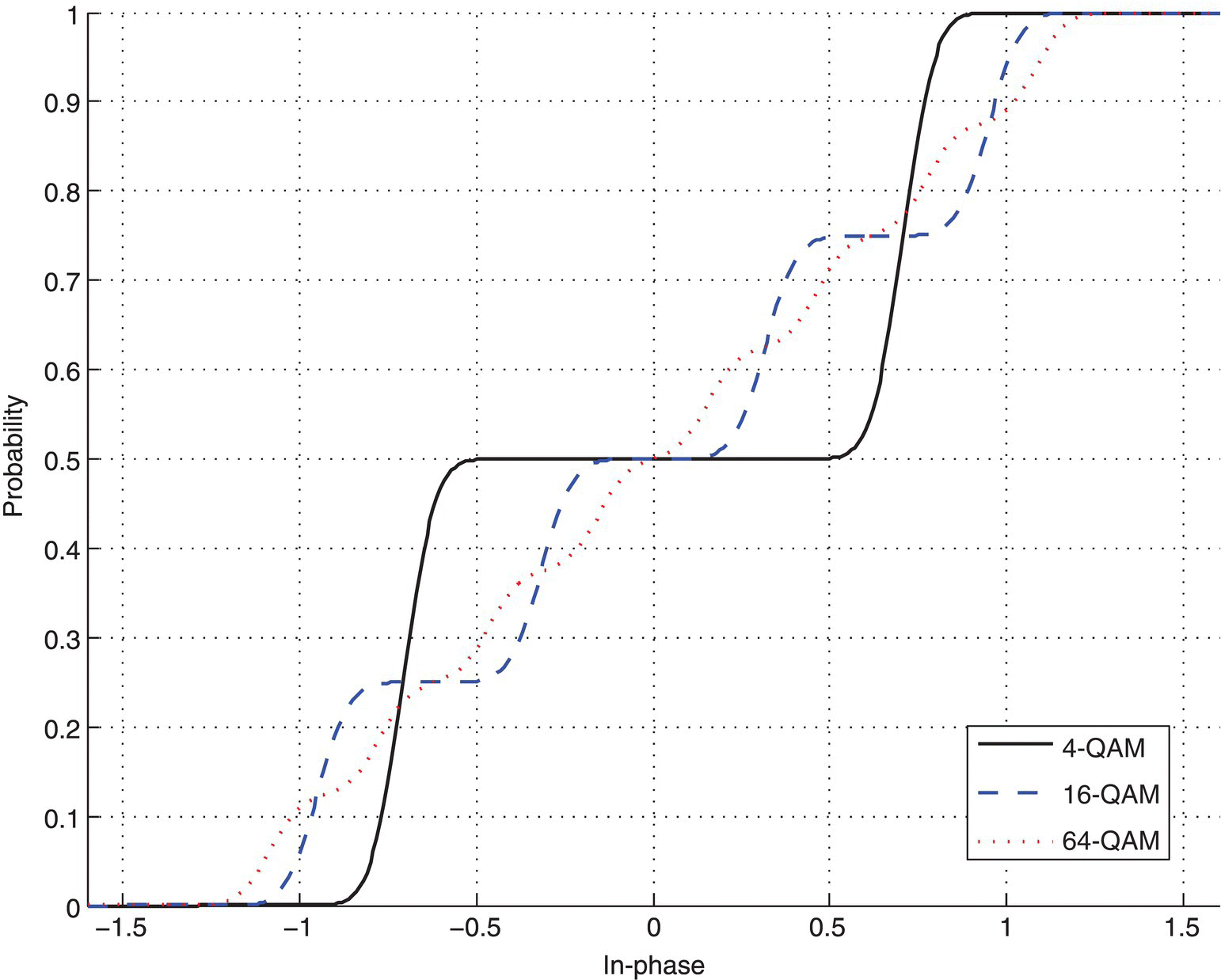4Distribution Test-based Classifier
4.1 Introduction
When the observed signal is of sufficient length, the empirical distribution of the modulated signal becomes an interesting subject to study for modulation classification. In Chapter 2, the signal distributions in various channels are given. It is clear that the signal distributions are mostly determined by two factors, namely modulation symbol mapping and channel parameters. Assuming that the channel parameters are pre-estimated and available, the only variable in the signal distribution becomes the symbol mapping, which is directly associated with the modulation scheme. In Figure 4.1, signal cumulative distributions of 4-QAM, 16-QAM and 64-QAM are given in the same AWGN channel.

Figure 4.1 Cumulative distribution probability of 4-QAM, 16-QAM and 64-QAM modulation signals in AWGN channel.
By reconstructing the signal distribution using the empirical distribution, the observed signals can be analyzed through their signal distributions. If the theoretical distribution of different modulation candidates is available, there exists one which best matches the underlying distribution of the signal to be classified. The evaluation of equality between difference distributions is also known as goodness of fit (GoF), which indicates how the sampled data fit the reference distribution. Ultimately, the classification is completed by finding ...
Get Automatic Modulation Classification: Principles, Algorithms and Applications now with the O’Reilly learning platform.
O’Reilly members experience books, live events, courses curated by job role, and more from O’Reilly and nearly 200 top publishers.

